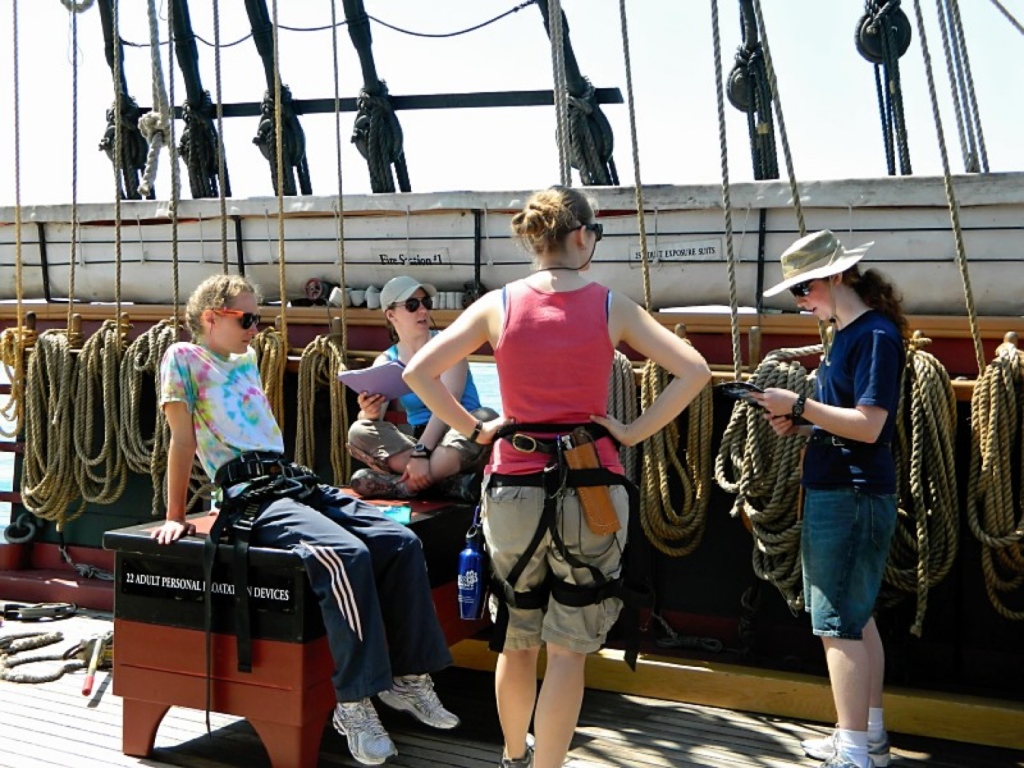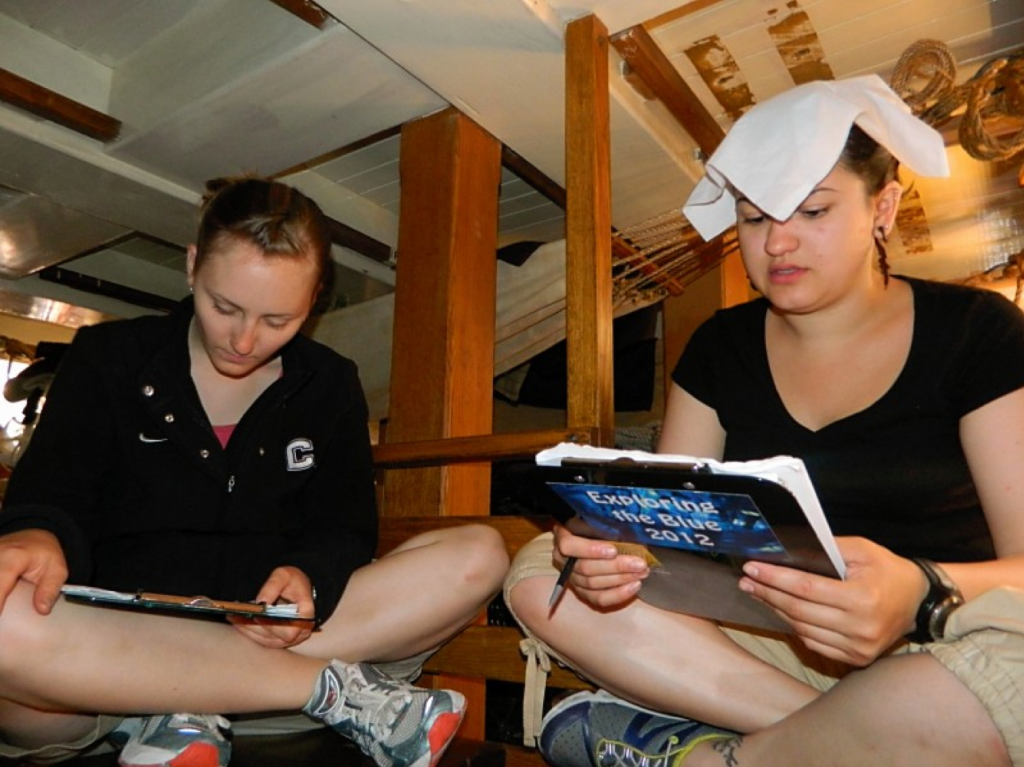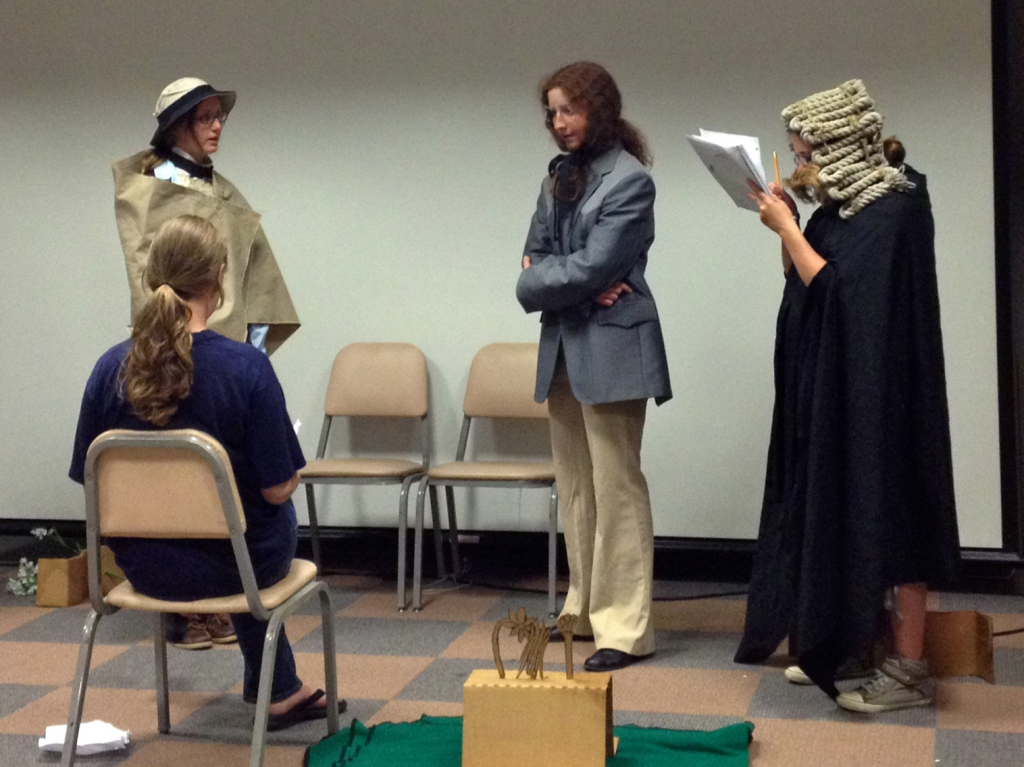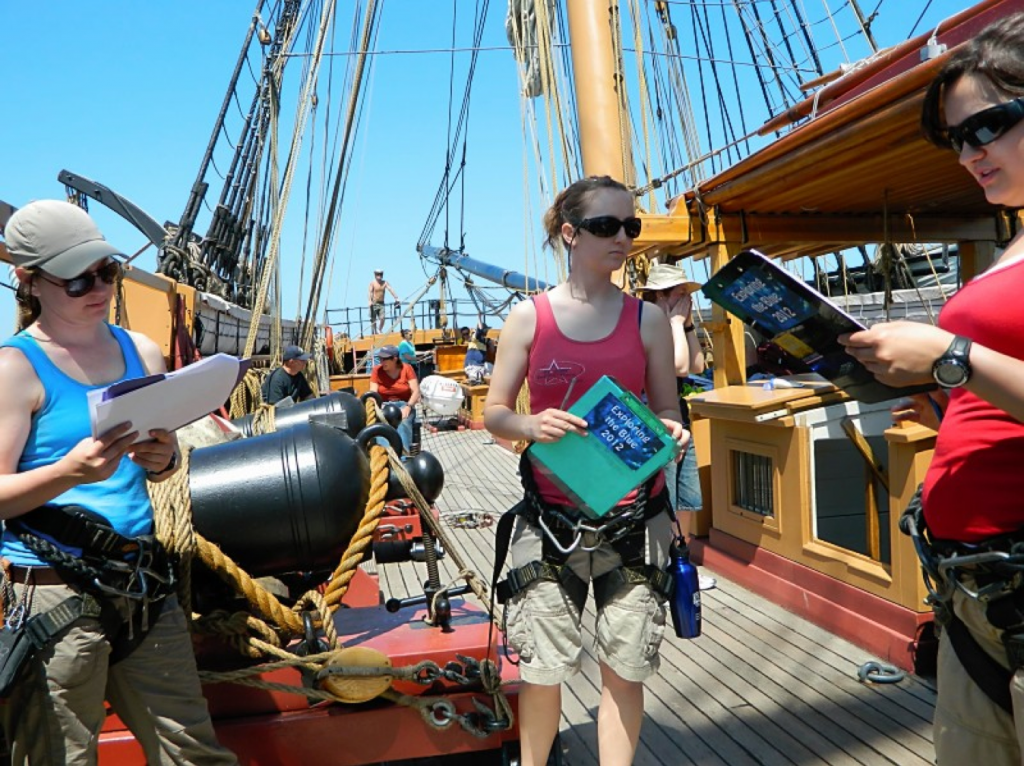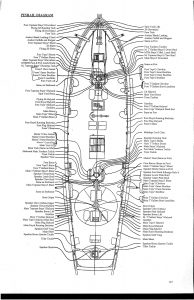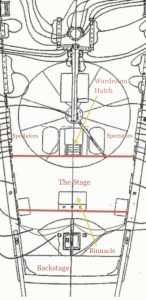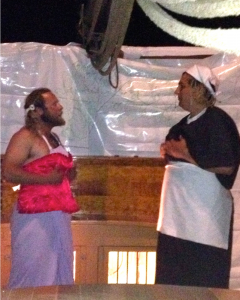Two hours before the debut performance of the Niagara Amateurs, I was aloft on the foresail yard, sea stowing sail as our Captain steered Niagara through Presque Isle Bay (I’m third from the left). After 3 ½ weeks living and working on the ship, I had become fairly confident aloft. I was far less confident about our play. I was painfully aware that we didn’t yet have a theater—just a quarterdeck, which would be occupied by the Captain and Chief Mate until we were safely docked at the Erie Maritime Museum. This is not to mention the fact that 3 ½ weeks had barely been enough time for the actors to memorize their lines; I’d felt more like a prompter than a director in the few rehearsals we’d squeezed into our busy schedule.
We rehearsed on the main deck and also below on the berth deck and inside the museum when we were docked in Erie. Rehearsals were usually only long enough to get through a scene or an act once—in some cases not even that long. Despite the chaos of the performance, however (in fact, because of it), the experience has served as a useful source in my research on shipboard theatricals.
Before this trip, I was drawing on more traditional sources to develop theories about the way shipboard theatricals fit into the gender and disciplinary systems aboard nineteenth-century naval vessels and how the unique features of the shipboard venue prompted adaptations of the popular plays selected for performance. I work with journal accounts, reviews, sea narratives, and playbills documenting over 20 different performance events in the British and American Navies (this is not including accounts from passenger transport and merchant vessels, which also exist). As one might imagine, these sources prompt many more questions than they answer, so I was thrilled to have the opportunity to stage a play aboard US Brig Niagara as a graduate assistant for UConn’s Exploring the Blue program: 3 ½ weeks living and working on Niagara (below, an image of the ship taken by Brittany Barsczewski, one of the students in the production), a replica of the 1813 square-rigged sailing warship that fought at the Battle of Lake Erie, and also serves as a United States Coast guard inspected Sailing School Vessel. The student production was an experiment in practice-based research, which I approach as “a radical extension of qualitative research,” drawing on Suzanne Little’s analysis in “Practice and Performance as Research in the Arts.” Ultimately, my experience directing a shipboard theatrical has informed how I interpret the sparse traces of the practice in the nineteenth century.
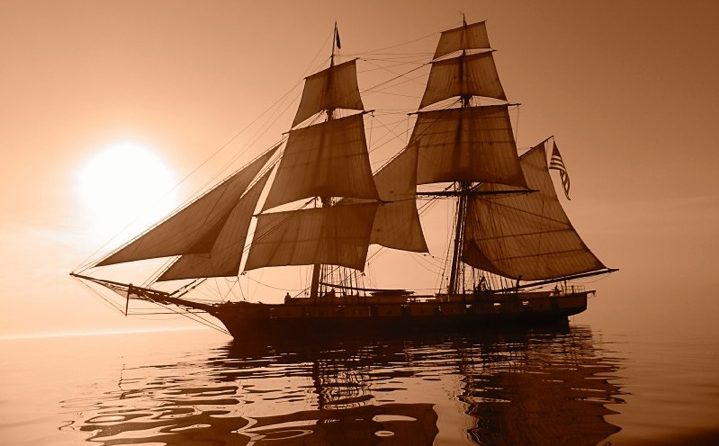
The 17 undergraduates who signed up for an adventure on the Great Lakes did not know they were signing up to perform a play. By some miracle, I had just enough students who recalled with fondness their experience in middle school plays to fill the parts. Of course, our priority as trainees was tall ship sailing: climbing aloft to loose and furl sail, performing routine maintenance, and learning when and how to haul on the one hundred and thirty lines that maneuver the ship. What you see to the right is the dizzying image of those lines from our handbook. These trainees were also students: The undergrads on the trip were earning 4 university credits by attending lectures every day, often after a full day of exhausting work. There is much to be said about the chaotically brilliant learning environment a working ship affords. Since returning from this trip, I’ve become fascinated with what we might call the history of sail training for amateurs. Two very well-known programs are SEA Semester and Williams-Mystic. For traditional sail training without the academics, there is The Barque Picton Castle, based out of Lunenberg, Nova Scotia. There is also fantastic information on the website for Tall Ships America.
The image to the left shows how we constructed the Niagara Theatre. The royal yards on the Niagara (which support the royal sails–the highest and the smallest) are not permanently set, which means they are stowed on deck, easily accessible and the perfect size for curtains, which are represented in this picture by red lines. The one without a sail attached was suspended from the boom so that our backdrop (made of sheet plastic from the carpenter) fell just aft of the binnacle (or box that holds the compass and other navigational instruments). The yard with a sail was also suspended from the boom—so that it would fall just aft of the hatch to the wardroom (or the stairs down into the officer’s quarters). This configuration made possible a number of very interesting staging features. First, we had plenty of room behind the binnacle for our actors to get into costume and await their entrances and exits (the black lines in the image show the range of motion of the helm but it wasn’t really in the way…same for the lines around the hatch—those show the range of motion of the capstan bars). Also, the hatch down to the wardroom offered the perfect spot for the prompter, who couldn’t be seen by the spectators, but was looking directly at the actors…very handy.
In 1813, Niagara carried a complement of 155 men, but in 2012, we operated the ship with 21 women and 15 men: No one was suffering from the prolonged absence of the opposite sex. What’s more, out of eighteen University of Connecticut students, we had only four male students, so it was not possible to cast the play entirely with men. I had no chance of recreating an all-male production for an almost exclusively male audience: one of the most intriguing features of shipboard performance in the nineteenth-century. Instead, I cross-dressed the entire performance: 6 female students in the male roles, one male student in the role of a waiting maid, and a male member of the professional crew in the female lead. To the right is an image from a scene in which the heroine and her waiting maid discuss their scheme to trick the hero. This scene was the most amusing to rehearse and the most successful during the performance, punctuated as it was by imperfect falsettos and constant bosom adjustments.
On a ship where women are expected to do all the same things men do, it is perhaps not surprising that our male impersonators did little other than don moustaches to transform into their male characters. It was the performance of femininity that required the greatest transformation, in other words. Our costume designer had great fun raiding the bosun’s pile of discarded manila to create wigs and moustaches. To the left, our judge.
Our performance, enhanced by the sounds of rigging and the smell of the ship (wood, canvas, and manila…glorious) strengthened my investment in documenting the material conditions of actual shipboard theatricals. But the ships that served as venues for the play we performed aboard Niagara no longer exist. Ultimately, our production was a very entertaining approximation, which has inspired more precise attention to staging through digital modeling and a production aboard USS Constitution in May 2014.


